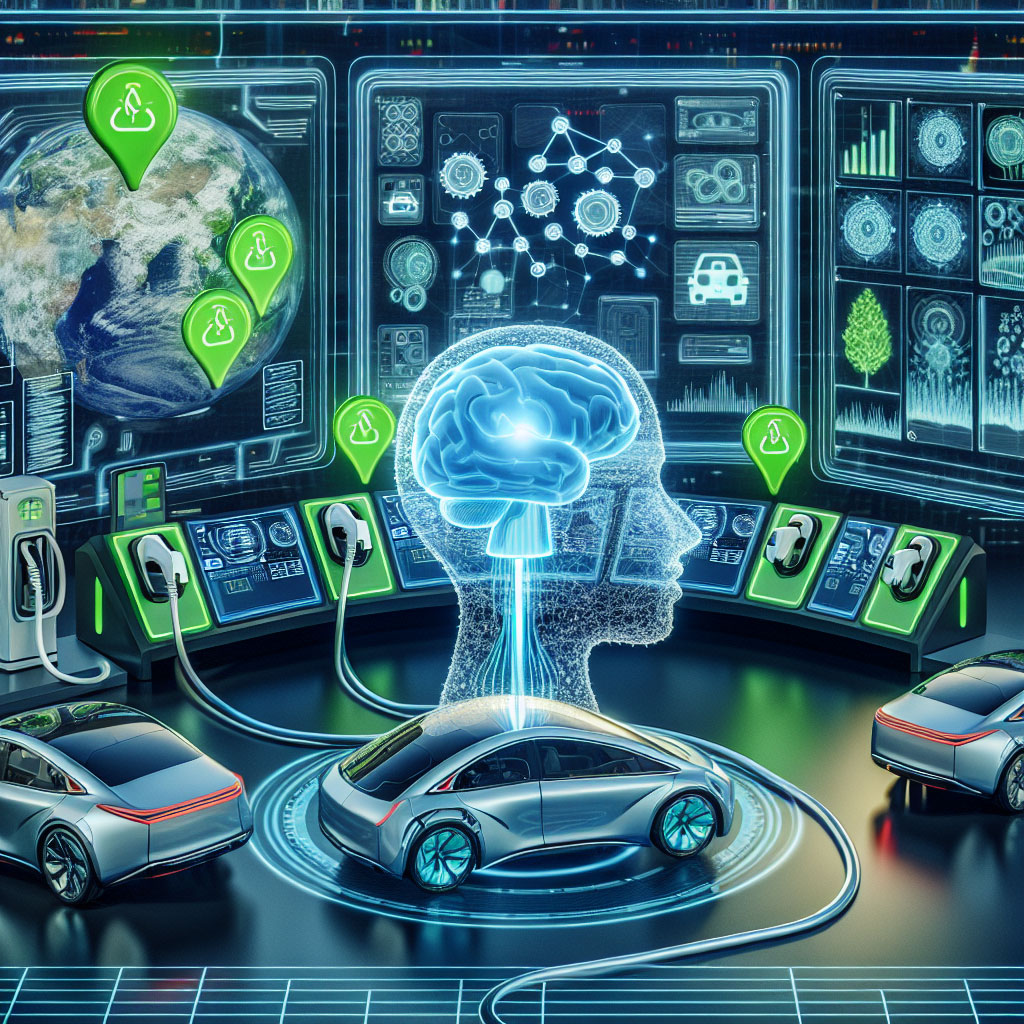
As Australia accelerates towards an electric-vehicle future, the conversation is shifting from simply adding more chargers to making charging infrastructure smarter, fairer and more resilient. Rising EV adoption, high rooftop solar penetration and increasingly volatile electricity markets mean that the next phase of charging rollouts must be data-driven. Artificial intelligence (AI) and machine learning (ML) are poised to be the engines of that transition – enabling better load balancing, personalised customer experiences, predictive maintenance, and grid-friendly energy flows.
This article explains how AI and ML will shape EV charging networks in Australia, outlines practical applications and regulatory considerations, and explores what consumers, operators and policy-makers should expect over the next five to ten years.
Intelligent load management: keeping the lights on and costs down
One of the principal challenges for distribution networks is managing clustered demand. If many EVs charge simultaneously in a suburb at peak times, distribution transformers and feeder lines can be strained.
AI-driven load management platforms use historical charging patterns, real‑time grid telemetry and weather forecasts to predict demand and orchestrate charging rates across multiple sites. Rather than a blunt “first-come, first-served” approach, intelligent systems can:
- Temporarily throttle charging at non-critical sites to prevent local overloads.
- Prioritise essential services and commercial fleet needs during constrained periods.
- Selectively shift charging to hours with lower wholesale prices or high local solar generation.
In Australia, where rooftop solar has become a critical distributed energy resource, AI can synchronise charging with solar production. Products such as the Ocular IQ Home Solar already demonstrate how smart solar integration can reduce grid draw; the next step is AI that predicts solar availability, feed-in tariffs and household schedules to schedule or modulate charging automatically.
Enhanced user experience: smarter scheduling and fewer surprises
For EV drivers, convenience and cost matter. AI-enabled charging apps and networks can recommend optimal charging times and locations – factoring in tariff changes, predicted queueing at public stations, and each driver’s routine. Machine learning personalises these recommendations by learning behaviour patterns over time (for example, preferred charge level, typical departure times and frequent routes).
Such services reduce wait times at high‑demand urban chargers and lower the total cost of ownership for drivers who can shift charging to off‑peak or high-solar windows. In commercial settings, intelligent reservation systems and predictive arrival detection can smooth throughput at rapid DC chargers like the Ocular Titan 60kW, improving station utilisation without overloading the local network.
Predictive maintenance and improved uptime
Reliability is a deal‑breaker for EV users. A network that’s frequently out of service undermines confidence and deters adoption. Machine learning models trained on operational telemetry – temperature, power draw, error codes, connector health – can detect early signs of component degradation and flag likely failures before they happen.
Predictive maintenance reduces unplanned downtime, lowers repair costs and extends asset life. For operators, this translates into higher availability for public chargers and better return on investment for large-scale deployments. It also allows maintenance crews to be deployed proactively and strategically, reducing truck rolls and improving customer satisfaction.
Optimised energy distribution and Vehicle-to-Grid (V2G)
AI will be central to integrating EVs into decentralised energy systems. Vehicle-to-Grid (V2G) and Vehicle-to-Home (V2H) functionality turn EVs into mobile batteries that can discharge to support the grid during peak demand or take advantage of high solar export periods.
Smart algorithms decide when and how much energy to draw from or return to the grid, balancing the grid’s needs with the driver’s journey requirements and the battery’s health. In markets with volatile wholesale prices or that experience capacity shortages, V2G-controlled fleets and residential aggregations could provide ancillary services, frequency control and local voltage support – potentially generating revenue streams for owners and stabilising the network.
Scalable network planning and siting
A costly pitfall for network operators is misallocating infrastructure. AI models that combine traffic flow, demographic data, EV registrations, land use, proximity to amenities and existing electrical capacity can pinpoint where chargers will be most used and deliver the highest social and economic returns.
These tools help governments and operators prioritise rollouts where they will reduce range anxiety and support equitable access – for example, deploying urban fast chargers on busy arterial routes while ensuring regional hubs cover long-haul corridors. Predictive modelling also helps size transformers and upstream assets correctly, reducing stranded investments and enabling phased deployments aligned to demand growth.
Security, standards and data governance
The benefits of AI come with responsibilities. Charging networks generate and rely on rich datasets, including location, energy usage and user preferences. Responsible deployment requires:
- Robust cybersecurity to prevent malicious interference with charging infrastructure or grid operations.
- Clear data governance and privacy protections so consumer data is used transparently and lawfully.
- Interoperability standards (OCPP, ISO 15118) to ensure devices from different vendors can share operational data and orchestrate intelligently.
Australian regulators and market bodies such as the Australian Energy Market Operator (AEMO) will play a central role in setting the frameworks that enable secure, competitive and consumer-focused deployments.
Practical considerations for Australian stakeholders
For fleet operators, councils and private network owners, the path to AI-enabled charging should be pragmatic:
- Start with data collection and telemetry on new or existing chargers.
- Pilot ML-driven control strategies in constrained networks or fleet depots to validate savings and reliability improvements.
- Engage with local distributors and AEMO early where V2G or large controllable loads are planned.
- Consider user acceptance and simplicity – complex algorithms must deliver transparent benefits consumers can understand.
The economics are increasingly favourable. As software increasingly optimises asset utilisation, the total cost per charging session can fall, making private investment in public‑access chargers more attractive.
Conclusion
AI and machine learning are no longer optional extras – they are fundamental tools to manage the complexity of electrifying Australia’s transport system. From dynamic load balancing and personalised scheduling to predictive maintenance and V2G aggregation, these technologies will improve reliability, lower costs, and support a stable transition to low‑emissions transport. Success will depend on sound data governance, open standards, and collaboration between industry, network operators and regulators to ensure the benefits are shared broadly across urban, regional and remote communities.
Frequently asked questions (FAQs)
Q: How soon will AI-enabled charging be widespread in Australia?
A: Elements of AI-enabled charging are already in pilots and early commercial deployments. Broader adoption will accelerate over the next 3-7 years as networks, standards and business models mature, and as more EVs and chargers support the necessary communication protocols.
Q: Will AI control overcharging and protect my battery life?
A: Yes. AI can manage charging curves to reduce fast‑charging stress and avoid unnecessary high‑rate charging, protecting battery health while ensuring vehicles are ready when needed. That said, outcomes depend on charger and vehicle interoperability and correct configuration.
Q: Could V2G damage my EV battery?
A: Properly managed V2G services are designed to minimise additional degradation. Algorithms factor in state of charge, battery health and owner preferences. Ongoing research and warranty frameworks will continue to refine best practices.
Q: Is my charging and location data safe?
A: Data safety depends on the operator’s practices and regulatory safeguards. Look for operators who follow industry standards for encryption, transparent privacy policies and comply with data protection regulations.
Q: How will AI affect charging costs for consumers?
A: AI can lower costs by shifting energy use to cheaper periods, leveraging local solar generation and reducing network congestion. In some cases, V2G participation may create revenue streams for vehicle owners. The net impact will vary by tariff structure and location.
Q: What should local councils and utilities do now?
A: Begin by mapping current and forecast EV demand, invest in data collection and smart metering, and work with vendors that support open protocols. Collaborative pilots with industry can validate benefits before large-scale rollouts.
About EV Evolution
EV Evolution is the leading online platform dedicated to Australian electric vehicle owners and enthusiasts. We foster a vibrant community, delivering essential EV news and insights, and enhancing user engagement through our innovative, AI-powered chatbot for dynamic discussions. Our mission is to empower Australian electric vehicle owners and enthusiasts by fostering a vibrant, AI-driven online community that connects, informs, and advances the nation’s electric vehicle landscape: How AI and Machine Learning Will Optimise EV Charging Networks




